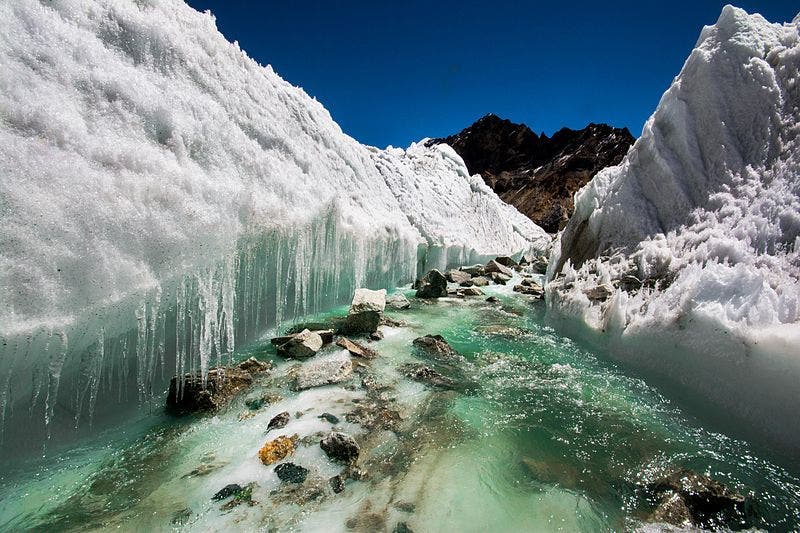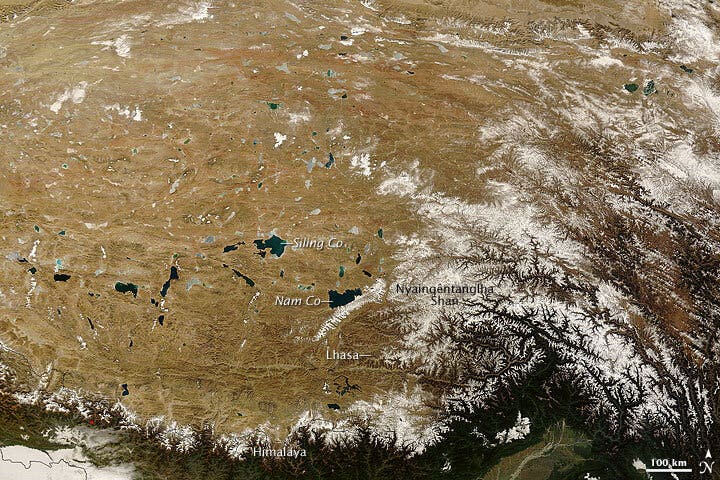Global heating is exposing the Himalayas to pollutants trapped in glacier ice.

The world still has a lot of work to do when it comes to regulating pesticide usage, but a few decades ago, things were much worse. According to a new study, harmful chemicals used in pesticides have been accumulating in the ice sheets and glaciers since the 1940s. Now, those chemicals are being released into the environment as the climate continues to heat up.
Pollutants can travel long distances and accumulate even in the most pristine environments. Previous studies have shown that they can travel for thousands of kilometers before being incorporated into Arctic or Antarctic ice (or glaciers) — where they remain trapped. This phenomenon makes it so that, paradoxically, pristine areas close to the poles are more polluted than other areas closer to the pollution source. This is called the Arctic paradox.
The paradox is also applicable to high mountain glaciers in the Himalaya.
South Asia, which hosts much of the Tibetan and Himalayan regions, features some of the most heavily-polluted areas in the world. It also hosts numerous glaciers.
The Nam Co Basin, on the central Tibetan Plateau, is home to more than 300 glaciers. These glaciers are melting at a rate that is unprecedented in human history. Between 1999 and 2015, the total volume of ice in the Nam Co Basin decreased by nearly 20%. This is not only putting people’s water supplies at great risk, but is also releasing significant quantities of dangerous chemicals into the environment, says Xiaoping Wang, a geochemist at the Chinese Academy of Sciences and an author on the new study.
Wang and colleagues measured the concentrations of a class of chemicals used in pesticides called perfluoroalkyl acids (PFAAs) in glacial ice and snow, meltwater runoff, rain and lake water in Nam Co Basin. They found that the glaciers in the region are a source of PFAA pollution, which they are slowly releasing into lake Nam Co. Each glacier is releasing PFAAs at a rate of over 1 milligram per day, which amounts to approximately 1.81 kilograms per year.
“In general, the results are comparable to previous studies on lakes in polar regions,” the team wrote, emphasizing the similarities to the Arctic paradox.
While the quantities are not huge, PFAAs have a very long lifespan, they don’t biodegrade, and are passed along the food chain and through various biogeochemical processes. The ones to suffer the effects first are microorganisms, and then insects. As different predators eat them, they absorb higher and higher pollutant quantities.
While this study did not include a toxicity risk assessment for aquatic life, previous research suggests that eating fish from the polluted lake would be unsafe for human health. Furthermore, the Nam Co Basin also feeds directly into water resources in India, which could mean even more hazards down the line.

More importantly, the study underlines once again just how interconnected and interdependent our planet’s ecosystems are. Studies have revealed similar processes at the poles and in European glaciers. Although this is the first study to document this effect in the Himalayas and there are significant geographical differences, the process is essentially the same. This goes to show that the effects of climate change are far-reaching and often hard to predict.
As our planet struggles to cope with the man-driven climate crisis, we will undoubtedly find out even more ways in which this process is affecting the environment.
Journal Reference: Mengke Chen et al. Release of Perfluoroalkyl Substances From Melting Glacier of the Tibetan Plateau: Insights Into the Impact of Global Warming on the Cycling of Emerging Pollutants, Journal of Geophysical Research: Atmospheres (2019). DOI: 10.1029/2019JD030566






